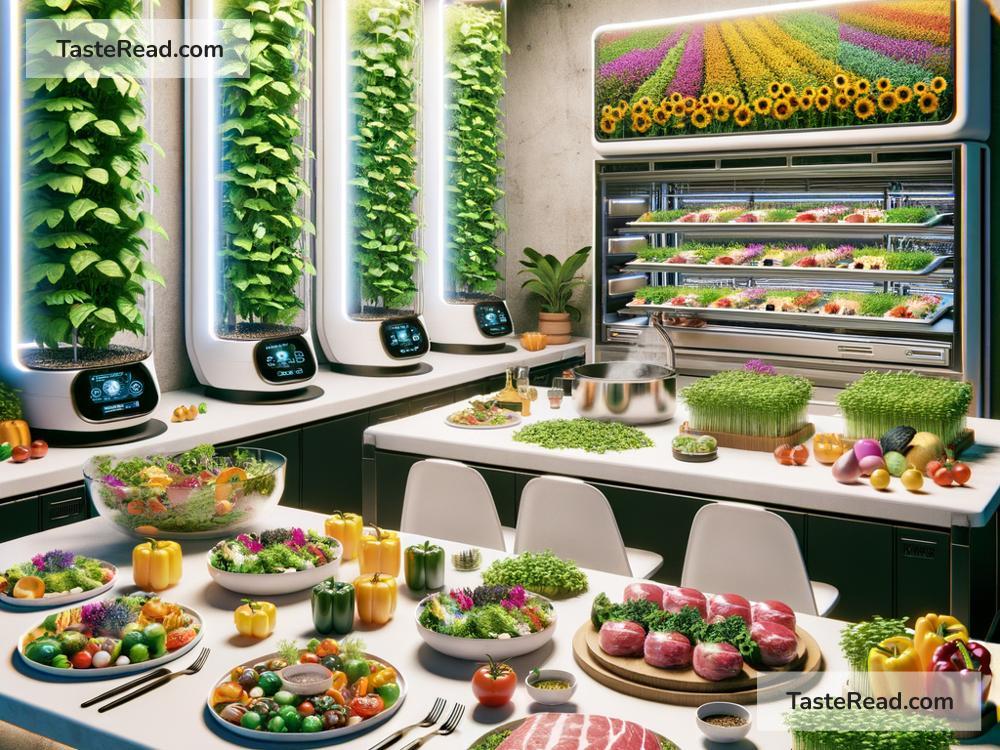The Future of Food: Shaping a Sustainable Tomorrow
Food is a fundamental part of our lives. It not only nourishes our bodies but also connects communities and cultures. However, as the world’s population grows and climates change, the way we produce and consume food needs a major transformation. If we don’t tackle these challenges now, we risk facing food shortages, environmental damage, and health problems in the years ahead. Thankfully, the future of food holds exciting possibilities thanks to sustainable systemic innovation.
Why Food Production Needs to Change
The planet currently supports over 8 billion people, and experts estimate this number will rise to nearly 10 billion by 2050. Feeding so many people requires a huge amount of land, water, energy, and other resources. Unfortunately, the way we grow food today often takes a toll on the environment:
- Agriculture and Climate Change: Farming contributes to climate change by releasing greenhouse gases, such as carbon dioxide and methane. Large-scale farming also relies heavily on water, which strains resources in dry regions.
- Deforestation and Land Use: Many forests are cleared to make space for crops or livestock. This harms wildlife and reduces nature’s ability to absorb carbon dioxide.
- Food Waste: About one-third of the food we produce globally ends up wasted. This not only wastes resources but also contributes to climate change when wasted food decomposes and releases gases.
In short, continuing with the current food system is unsustainable. We need smarter, more efficient ways to feed the world without exhausting the planet.
What Is Sustainable Systemic Innovation?
Sustainable systemic innovation has the potential to transform our food system. It’s about finding new solutions that not only benefit people today but also protect the planet’s future. Rather than tackling just one problem at a time, systemic innovation looks at larger systems—like farming, transportation, and food packaging—to find ways they can work better together.
This approach combines scientific breakthroughs, creative ideas, and new policies that focus on long-term sustainability. It seeks to make food healthier, more accessible, and environmentally friendly while supporting farmers and workers.
Innovations Shaping the Future of Food
Here are a few exciting and sustainable innovations paving the way for a better food system:
1. Alternative Proteins
Meat production uses enormous amounts of land and water, and raising animals releases greenhouse gases. Alternative proteins, like plant-based or lab-grown meat, offer a greener solution. Companies are now creating burgers, chicken, and even fish from plants or cells, delivering protein-rich foods without harming the environment. These products are becoming more affordable, tasty, and widely available, meaning they could significantly reduce the need for traditional livestock farming.
2. Vertical Farming
Picture rows of leafy greens growing inside stacked shelves in tall buildings. That’s vertical farming—a method that uses less land, water, and chemicals compared to traditional farming. These farms can be built in cities, offering fresh produce to urban residents. Because vertical farms make use of controlled environments, they can grow food year-round with minimal waste.
3. Precision Agriculture
Technology is changing the face of farming. Precision agriculture uses tools like drones, sensors, and GPS mapping to optimize how crops are grown and harvested. Farmers can monitor soil health, water levels, and pests more effectively, helping reduce chemical use and ensuring resources are used efficiently.
4. Rediscovering Sustainable Crops
Some crops, like quinoa, millet, and seaweed, are highly nutritious and environmentally friendly. Yet many farmers focus on staples like rice and wheat because of demand. By promoting underused crops that thrive in challenging weather conditions, we can support food security while reducing the strain agriculture places on water and soil.
5. Reducing Food Waste
Innovations that help prevent food waste are critical for sustainability. Apps and programs now help connect surplus food with people in need, minimizing waste at grocery stores and restaurants. Advanced packaging technologies are also extending the shelf life of food, ensuring less is thrown away before it’s eaten.
6. Cultivating Local Food Systems
Transporting food across the globe uses fuel and creates pollution. More communities are exploring local food systems, where food is produced closer to where it’s consumed. Urban gardens, regional farms, and farmer’s markets strengthen local economies, reduce emissions, and offer fresher produce to consumers.
Challenges to Address
While sustainable food innovations are promising, challenges remain:
- Many cutting-edge technologies require significant investment and may take years to be adopted widely.
- Farmers and businesses need education and support to transition to more sustainable practices.
- Policies must encourage eco-friendly practices, such as reducing food waste and limiting harmful farming methods.
Consumers also play a huge role in shaping the future of food. By choosing plant-based meals, buying local produce, and avoiding waste, individuals can make a positive impact.
A Shared Goal
The future of food is about balance—feeding billions while protecting the planet for generations to come. Sustainable systemic innovations offer hope, but they require governments, businesses, and individuals to work together. As we embrace new ideas and technologies, we must keep equity in mind, ensuring that everyone, regardless of where they live, has access to affordable and nutritious food.
With creativity and collaboration, a better food system is within reach. Together, we can create a world where people, the environment, and the economy all thrive. The way we eat and grow food is evolving, and it’s up to all of us to support healthy, sustainable choices for a brighter future.


